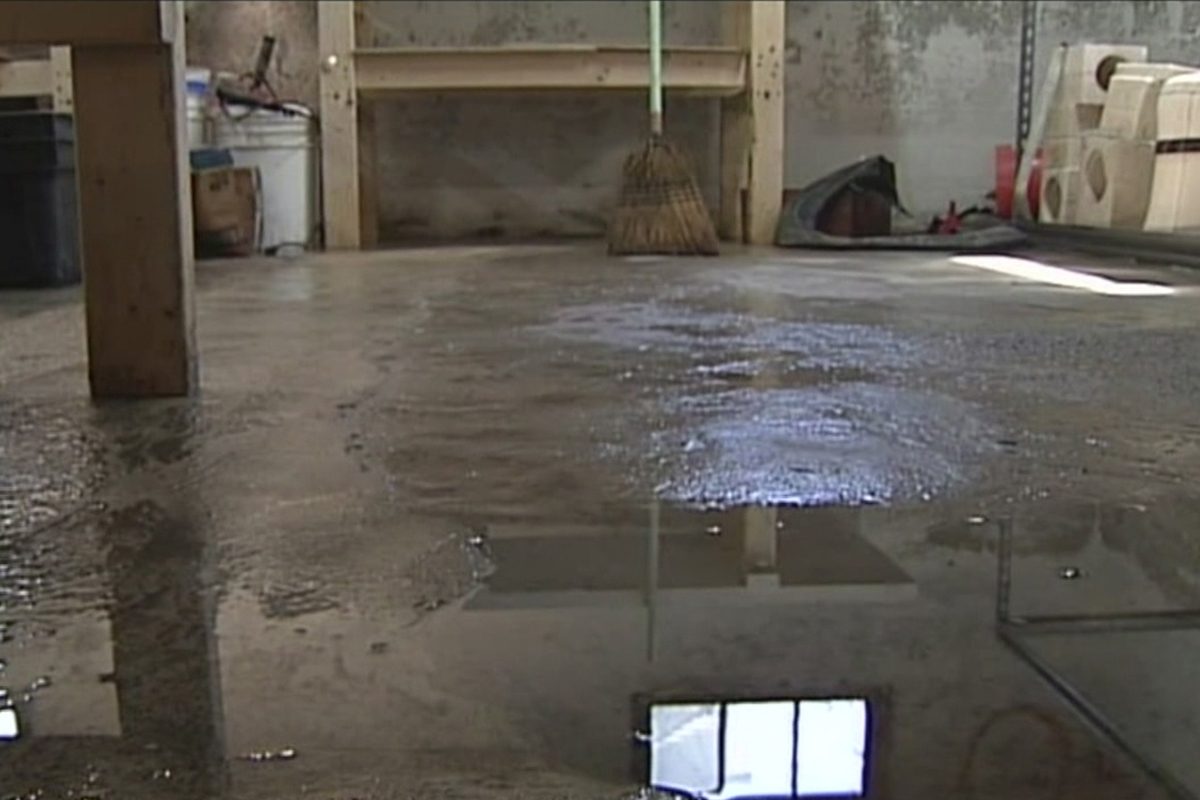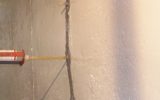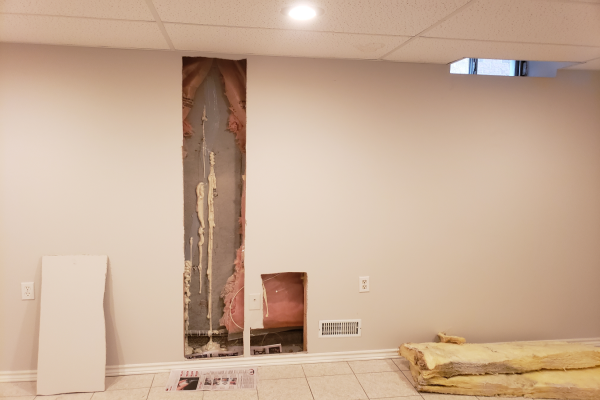When you discover water in your basement it is natural to think that you have a basement leak; that water is somehow finding its way through your foundation wall. When your basement is unfinished and there is water on the floor and no evidence of a leaking foundation crack or anything else in the foundation wall, what should you think? In fact, many homeowners report that they observed that water comes up through the basement floor, usually where the wall meets the floor. It is for this reason that many homeowners ask the question: why is water coming up through my basement floor or up through floor cracks?
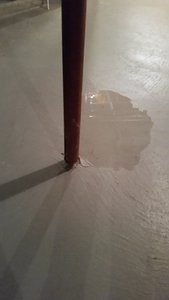
If water in the basement didn’t come through the wall then it must have come either over the wall or from beneath the basement floor (unless there is actually a plumbing leak responsible for the problem). Check out this rare video clip of water coming up through a basement floor.
Why ground water comes up through basement floors
Ground water under your basement floor is often under tremendous pressure caused by a rising water table, the height of which is affected by several common factors such as:
- How much and how often it has rained;
- The type of soil around the home;
- The hydrological conditions around the property;
- How fast the snow melted; and
- If the downspouts for your eavestroughs are directed into the weeping tile.
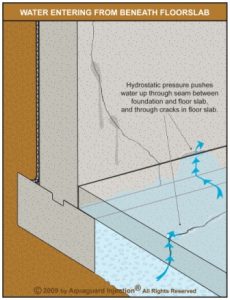
All of those factors can cause a rapid local rise in the water table; consequently, alot of water can enter your basement from beneath the floor in a very short period of time.
Need help? Contact us for a quote.
As the water table rises, the amount of hydrostatic pressure increases. If there are gaps in the concrete floor (such as cracks), or where the basement floor meets the foundation wall (the cove joint or seam between the foundation and the floor slab), ground water is forced up through them and into your basement.
Other causes of a high water table and seepage into the basement
- Sump Pump Failure – If your sump pump isn’t working then you aren’t draining water at the base of your foundation as was intended. This situation will cause the water table to rise, sometimes to the point that water comes up through the basement floor and the basement floods.
- Clogged Weeping / Drain Tile – Depending on the age of the home and other factors, weeping tile can become clogged and non-functional. While complete weeping tile failure is unlikely, poor footing drainage at the base of the foundation wall could result in the pooling of water and a consequential rise in the height of the water table.
How to stop water from seeping through basement floor cracks or the cove joint
It is very difficult to identify why there is a high water table around your home; as a result, identifying the ideal solution for solving resultant wet basement problems is tricky and requires experience. A very efficient and cost effective way to control the height of the water table beneath your basement floor is to install an interior perimeter drainage system. This type of system is the industry standard means of dealing with wet basements caused by a high water table. In a nutshell, this system is installed beneath a basement floor to collect ground water and pump it out before it gets high enough to push up through basement floor cracks and/or the cove joint.
Attempting to seal the cove joint or floor cracks is not a recommended repair strategy for situations where water is seeping in from beneath the floor. This is because the hydrostatic pressure is typically so significant that it bypasses the repair attempt, and also because water will typically take the path of least resistance to where it can enter the basement.
Check out our post on basement waterproofing methods.
There are a number of steps that the average homeowner can take to mitigate the risk of an overly high water table and consequently the likelihood of basement flooding.

